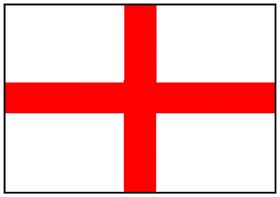THE ENGLISH TO CANADA WEB-SITE
www.englishtocanada.com
The website for people whose ancestors came from England and settled in Canada.
Ontario
THE ENGLISH IN ONTARIO (UPPER CANADA)

Dundas Street in the town of London, 1840.
Painting by James Hamilton.
As was the case with Quebec, many of the province’s early English settlers originated from the north of England, especially Yorkshire and Cumberland. Devon and Cornwall were also especially well-represented in the outflow of people to Ontario. By the 1830s Yorkshire people were much in evidence along the northwest side of Lake Ontario, as were the Cornish who joined them in substantial numbers after 1840. People from Devon created a large community for themselves, in the Huron Tract, a vast area within south western Upper Canada, while several hundred immigrants from Wiltshire and Somerset made their home along Lake Erie.
During the 1830s a considerable number of English labourers, mainly from the southern counties of Sussex, Kent, Norfolk, Suffolk, Wiltshire and Somerset, were assisted to emigrate to Ontario by their parishes. Some went to remote areas in Peterborough and Simcoe counties but most settled along Lake Erie or on the northwest side of Lake Ontario.
A growing economic crisis in agriculture in the 1870s caused many English farm labourers to move to Ontario under schemes organized by agricultural trade unions. A particular trouble spot was Bedfordshire which lost a steady stream of poor farm workers to Ontario during the second half of the 19th century.
By 1870 the Ontario government was running promotional campaigns to attract colonizers to the vast wildernesses of northern Ontario. For instance, many English took up the free land grants being offered in Algoma District.
By the end of the 19th century a growing number of English immigrants were flocking to Ontario. They came from all parts of the country and had extremely varied social and work backgrounds.
For further details see chapters five to eight in Seeking a Better Future, Lucille's book about Ontario and Quebec.
© 2020 Lucille and Geoff Campey.

